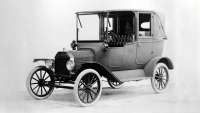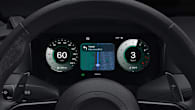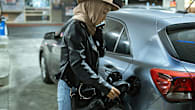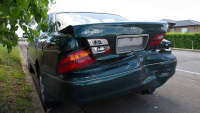Q: Do more countries drive on the left or right?
A: It’s a significant advantage for right-hand-side countries, with approximately 65 per cent of the world driving on that side of the road. This includes some of the biggest countries and those with some of the biggest car industries - namely the USA, China, South Korea, Germany, France, Italy, Canada and Mexico.
Thankfully for Australia’s new-car selection, both the United Kingdom and Japan are left hand side countries, along with India, Pakistan, Thailand, South Africa and Malaysia.
Pros and cons of driving on either side of the road?
There’s no specific advantage to either side from a day-to-day driving perspective. Each country has its road networks and infrastructure set up for whatever vehicle type it sells, so it doesn’t make a difference what side you drive on, in that sense.
However, the big disadvantage for countries that drive on the left is a significantly diminished amount of available vehicles. With the majority of the world and its biggest carmakers beginning each car design with the steering wheel on the left-hand side of the vehicle, it means countries like Australia often miss out on models as it can be too expensive to engineer them for less than 35 per cent of the global market.
.jpg)
Why do some countries drive on the left and others on the right?
It was London lawmakers from 1669 who unwittingly determined what side of the road you drive on today. Back then there were no formal ‘road rules’ for riding horses or horses pulling carts, which meant in built-up areas, such as London, the roads could get blocked. So, a new rule was passed in 1669 that forced all carts coming into the city via London Bridge to travel on the left-hand side, while carts leaving needed to go on the right-hand side.
Meanwhile, in 18th century America, teamsters (the large wagons pulled by horses) were typically directed by a driver sitting on the last horse on the left-hand side. This driver wanted to be able to see what was next to him, meaning the teamsters ended up ‘driving’ on the right side of the road.
I bet you didn’t think horse and carts would have made such an impact on your life in 2025, but that’s the story of which countries drive on the left side of the road and which ones drive on the right.
While typically we would refer to Australian vehicles as being right-hand drive, as that’s the side we sit on (from the driver’s point-of-view), for the purposes of this article we’ll be referring to the differences between the side of the road as left-hand drive countries for those who drive on the left side (from the driver’s perspective) and right-hand drive countries for the opposite.
So, Australia is a left-hand side traffic country, whereas the USA and Europe are right-hand side.
In the case of left hand-side countries, there is a clear connection - the British Empire. The United Kingdom, Ireland, Australia, New Zealand, India, South Africa, Hong Kong, Singapore, Kenya and so on. Obviously there are some expectations, such as Canada, but this was due to a combination of its proximity to the United States and its French heritage in various large regions.
One of the most remarkable stories about what side of the road people drive on comes from Sweden, which literally changed overnight on September 3, 1967 - Dagen H (H-Day). Sweden was originally left-hand traffic and had been since the 1750s, but being surrounded by Finland and Norway which were both right-hand traffic countries, it put Sweden out of step with its neighbours.
So in 1955 the Swedish government held a referendum, only for the overwhelming majority of voters to reject the notion. Undeterred, the government simply ignored the result, waited a few years and announced in 1963 that it would change over anyway.
A special department was put together to oversee the change, which involved four years of advertising, education and reorganising the traffic infrastructure. Then on Dagen H all traffic was banned from the roads between 1am and 6am, with the official changeover occurring at 4:50am. Any car on the road at that time was directed to carefully change to the other side and ever since Sweden has been a right-hand traffic country.
Remarkably, Samoa made the switch as recently as 2009. As a former German colony it had originally been a right-hand traffic country, but with cheaper vehicles available from nearby Australia, New Zealand and Japan, the decision was made to switch sides. Like Sweden 42 years previously, traffic was stopped early in the morning and cars had to move to the other side of the road.
.jpg)
If you are travelling and driving on the opposite side to normal, what should you do to prepare?
Looking at the most popular destinations for Australian tourists based on 2024 data, there’s a surprising coincidence that most happen to be left-hand traffic countries. That means all you need to do is familiarise yourself with the local road rules and etiquette and you should be safe on the roads.
If you end up in a right-side traffic country, such as the USA, then the simplest advice is to keep the centre lane marking next to you. So, when you look out the side window, you should be able to see the lane marking - just like the teamsters on their wagons.
Here’s a quick history on why each of these five popular tourist spots drive on the side of the road they do.
Indonesia - Left side traffic
While not part of the Commonwealth, Indonesia’s roadways were built by the Dutch and designed for left-side traffic to adopt the British Empire’s way of doing things, as it was the strongest political player in the region at the time.
New Zealand - Left side traffic
Just like Australia, New Zealand follows the lead of the United Kingdom as we’re both part of the Commonwealth.
Japan - Left side traffic
There are two different reasons widely accepted for why Japan bucks the trend of most of its neighbours and drives on the left-hand side of the road.
The first dates back to the Edo period (between 1603 and 1863) when Samurai would carry their swords on their left-hand side, so they would pass each other on the left side to leave them free to attack or defend if necessary.
The other more recent and technologically relevant reason is the British helped build Japan’s initial rail network, and therefore applied its ‘pass on the left’ philosophy.
These factors set the precedent and when the car came along, it was only natural to the Japanese that they would drive on the left-hand side of the road.
United States - Right side traffic
In addition to the teamsters and their wagons, Henry Ford eventually made sure that Americans drove on the right side of the road. Despite the teamsters, when Ford began building cars there was no nationwide rule, so Henry made it so. He put the steering wheel on the left side of the car and began mass producing them, leaving the rest of the market and the country to simply fall in line.
United Kingdom - Left side traffic
While the London Bridge rule was the first documented case of the UK having a left-hand-side traffic law, it’s believed that the country has been riding horses and walking on the left-hand side for centuries - dating back to Roman times.
This is thanks to the long held stigma around left-handed people, meaning most people either swung their sword or cracked a whip for their horses with their right hand and therefore rode on the left.






.jpg)

.jpg)



_0.jpg)

.jpg)

.jpg)
.jpg)
.jpg)
.jpg)
.jpg)
.jpg)
.jpg)
.jpg)
_0.jpg)

_0.jpg)

.jpg)





.jpg)

